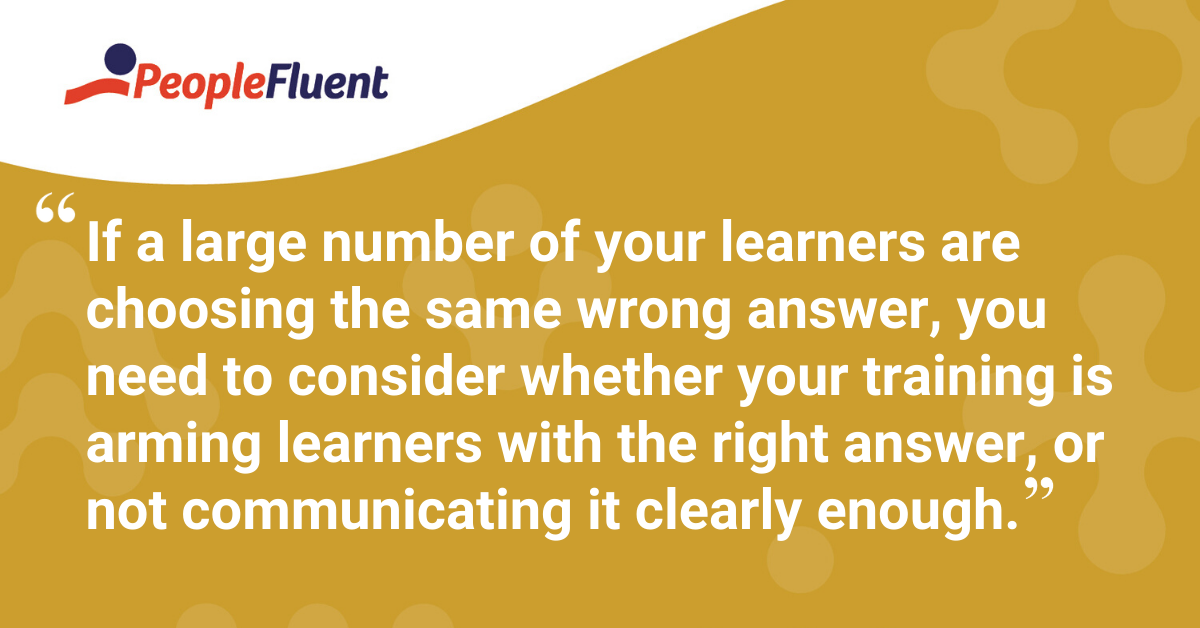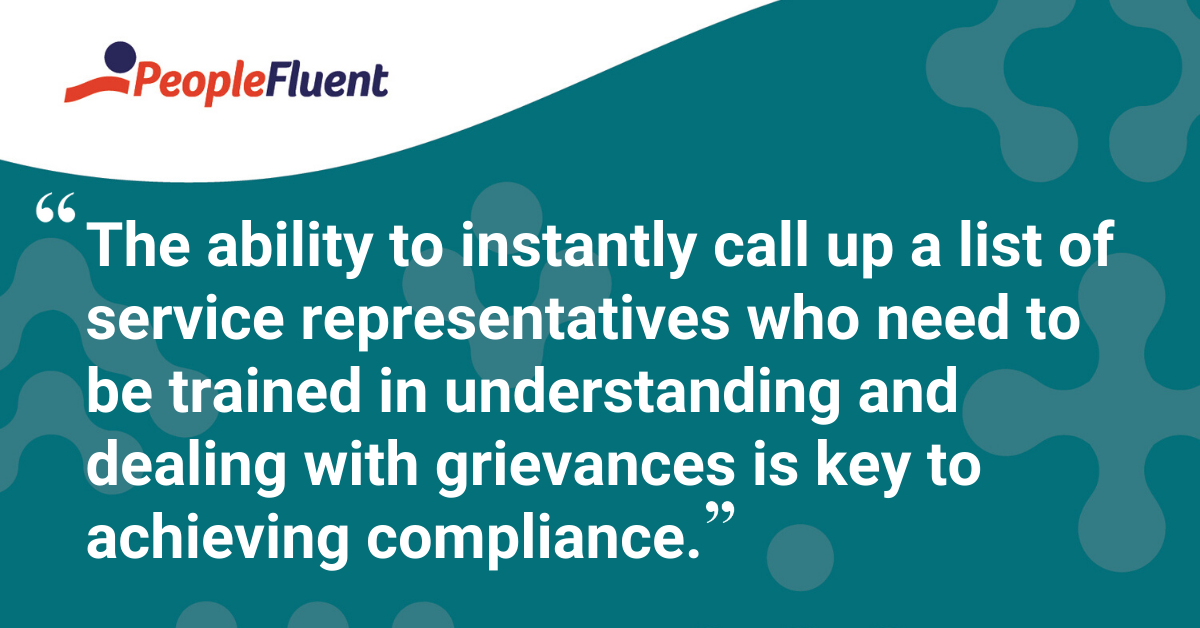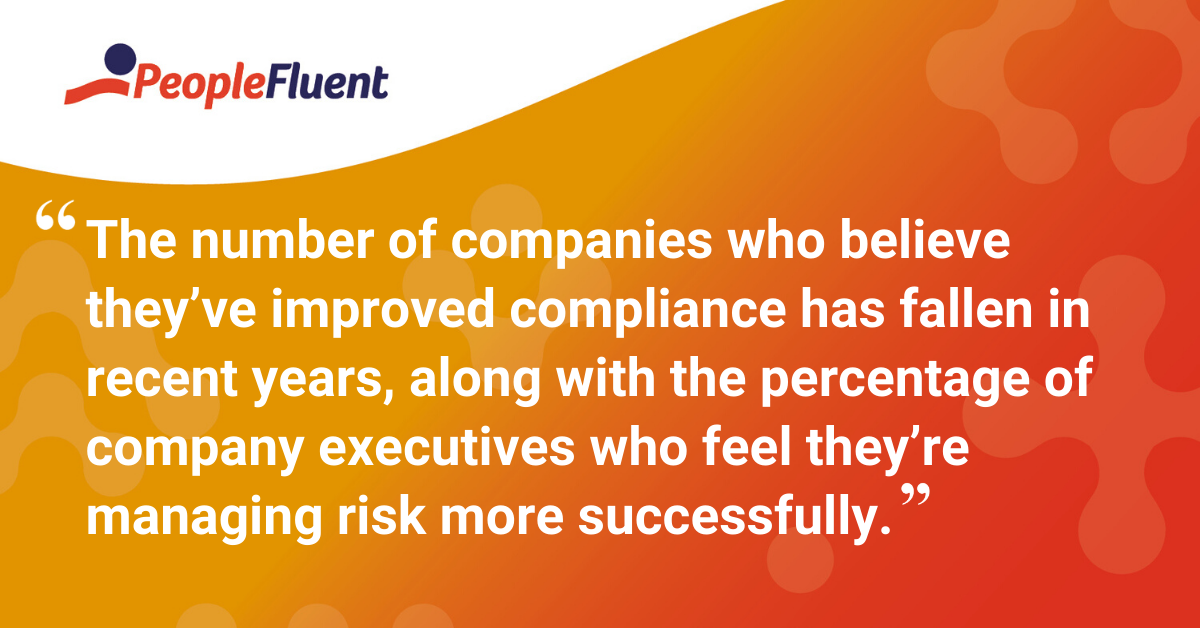Published: Apr 29, 2019Time to read: 5mins Category: Learning
3 Ways an LMS Takes the Confusion Out of Compliance Issues
To show you what we mean, here are three practical examples of how an agile LMS is crucial when there’s no room for error.
Dealing with Compliance Issues Tip #1: Drill Down Into Exam Summaries
Knowing when people have taken, passed or failed assessments is important, but it only tells you part of the story.
In order to be able to improve training and understand where knowledge gaps are, organizations use a compliance LMS to explore and visualize the areas people are finding tricky.

With a single choice question, an LMS can produce a summary of the answers chosen by learners, as well as a summary of the number of people who picked each option for multiple choice questions.
This can help to identify and clear up misconceptions and misunderstandings about the correct answer in certain scenarios. If a large number of your learners are choosing the same wrong answer, it’s a sure sign that you need to consider whether your training is arming your learners with the right answer, or not communicating it clearly enough. In this situation, a learning team would want to tweak their training program and elaborate more clearly why the current most popular selection isn’t the best answer.
There are a wide variety of other ways you can interrogate exam data to refine your learning. For example, an LMS allows you to create easy-to-understand reports on:
- The percentage of assigned learners who have completed a specific course module.
- The overall percentage of wrong attempts made on each question in an exam.
- All the responses to individual questions, exportable for formats such as Excel spreadsheets, PDFs or CSV.
- The amount of time spent by individuals on questions, alongside their score and pass or fail.
- A summary analysis of learner responses to a survey, such as how they rate the user-friendliness of the course.
Recommended related reading: 'The 13 Must-Have Features of a Learning Management'
Dealing with Compliance Issues Tip #2: Always Know Exactly Who Needs Recertification
Successful learning organizations know that training is a continuous process, and the frequency of inspections and new regulations make up-to-date training certification critical in high-consequence industries.
The top priority risk areas for these organizations are:
- Data protection and privacy
- Code of conduct
- Health and safety
- Respect, equality, and diversity
- Digital risk, cyber security and information security

More than 80% of the average workforce takes part in compliance-related programs each year, and many people need to renew their certifications on at least an annual basis.
A good compliance-focused LMS gives L&D teams clear visibility of learners who aren’t certified and certificate awards that are about to expire. These can be synchronized with automatic alerts to:
- Let managers know when people need to take training.
- Update learners when they need to complete fresh training.
For example, in January 2019 a US healthcare company was fined hundreds of thousands of dollars for failing to correctly implement a grievance process for enrollees. In predicaments such as this, the ability to instantly call up a list of service representatives who need to be trained in understanding and dealing with grievances is key to achieving compliance.
Dealing With Compliance Issues Tip #3: The Wonder of Widgets
You might have heard the term but are wondering: what is a widget?
A widget is an element that can be added to the home page within the LMS. It might be a list of courses that a learner can click on to start learning, company news, or a social media feed.
In L&D, widgets are incredibly useful for tracking individual and organizational learning progress. They can be used to show a learner their current goals and the dates they’re aiming to achieve them by. They’re also handy to show a manager a list of the goals each member of their team is currently pursuing—and their progress towards them.
Another great use of widgets is to display delegated tasks, recent user activity, and proficiency levels. In fact, a modern LMS should provide widgets that are configurable to show almost any element relating to compliance training.
For example, a learner’s competency training status is displayed across a range of areas via percentage bars. This can be configured to show different areas, such as anti-bribery and money-laundering training for the current year, and personalized according to each learner.
Employee progress can also be clearly tracked using 'My Progress Tracker' features such as color coding. The number of courses each learner is taking and the progress they’ve made can be charted in one neat summary, with a dropdown box allowing their learning from different years to be summoned.

A Compliance LMS Keeps You Ahead of the Curve
Intelligent tracking and proactive risk management capabilities are vital to forward-thinking companies who are constantly achieving high compliance levels. However, 86% of organizations are still seeing shortfalls in their training.
The number of companies who believe that they’ve improved compliance with new regulations and legal requirements has also fallen in recent years, along with the percentage of company executives who feel they’re managing risk more successfully.
While best-of-breed compliance technologies are helping organizations to surface shortcomings, they also hold the key to rectifying regulatory issues. Choose a robust LMS, put it to work wisely, and watch the desired results follow.
Discover How Learning Builds Skills and Ensures Compliance
Design, deploy, track, analyze, and report on enterprise learning and compliance programs. PeopleFluent helps you execute your programs seamlessly, so employees upgrade their skills and you get results.